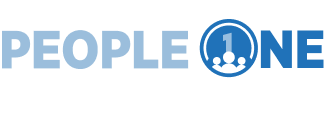
Thanks to COVID-19, working from home has become the new normal, and it is here to stay. Before the pandemic, work from home was considered a perk reserved for managers seeking flex time away from the office. Now it has become a worldwide phenomenon that is paying off for most companies.
Not only does it create a work-safe strategy to protect employees, it also saves workers’ commute time, child-care costs, and more. However, along with the perks, it is also a challenge to keep your remote team accountable and productive while keeping their morale high.
According to Gallup Research, when employers put the right mix of culture, technology, and processes in place, remote work does make employees more productive.
In 2012, 39 percent of employees worked remotely, and the number grew to 43 percent by 2016. In fact, 54 percent of workers say they would leave their current job to work remotely. The research also shows that having job flexibility promotes engagement, and engaged employees deliver better performance, including:
- 41 percent less absenteeism.
- 40 percent fewer quality defects.
- 21 percent higher profitability.
With the global pandemic, we now have the world’s largest work-from-home experiment.
The Challenges of Work-from-Home

However, institutionalizing work-from-home continues to be challenge for many organizations. Not only do they need the technological infrastructure to support remote teams, they also need to keep remote workers engaged and productive.
One may not notice it initially but change in workspace has a tremendous impact on productivity. For instance, a kitchen table can be the new work desk and while for some, it does not hamper their work vibes, for some, it is counterintuitive.
To ensure maximum productivity for remote workers, the temptation is to impose a rigid monitoring structure to keep remote workers accountable. However, research shows that too much structure kills productivity, so smart managers are looking for other strategies to keep their remote team accountable and productive.
Promoting Accountability for Remote Workers

Whether working remotely or in the office, accountability starts with communication. Goals and expectations must be clearly defined, and open channels of ongoing communication must be available to promote collaboration.
Half of American workers say they don’t know what is expected of them. Expectations and performance metrics need to be set for both teams and individuals, including specific tasks, quality standards, and deadlines.
Use milestones to establish expectations for accountability and productivity, including setting immediate goals and long-term objectives. Scheduling regular meetings will help the team review progress and revise expectations. At the same time, managers need to monitor individuals’ progress and providing assistance where needed.
As part of open communication, you need to have a common collaboration platform that supports communication and project management. The reason many work-from-home strategies fail is lack of training as well as poor communication.
Remote team members must be comfortable with the tools needed for remote collaboration to be successful. If they can’t set up a video conference or don’t know the best way to reach other team members, then productivity will suffer.
Once you have a common digital workspace in place and the team has been trained in how to use it, you can start using accountability tools that won’t inhibit creativity. For example,
- Project management software makes it easy to manage project scope, time, budgets, and other factors, and, more importantly, can provide a snapshot of individual and team progress, in addition to identifying what has to be done,
- Workflow processes also clarify how things have to be done in addition to what has to be done in order to achieve established goals.
- Deadlines help maintain timely work and goal achieving. Every task needs a deadline and clarity regarding project interdependencies. If one team misses a deadline, they need to know what impact that has on other teams and the overall operation.
To encourage accountability and promote productivity, be sure every member of the team has a voice. The digital workspace makes it easier for the remote team to share ideas using chat, employee portals, and similar tools. Encourage participation and acknowledge contributors to keep everyone engaged.
Work from home promises to be the new normal. Savvy managers will have to do what they can to empower remote workers and motivate them to unlock new productivity levels. For this, there is an impertinent need for digital work-from-home model that focuses on communication and collaboration.
If you want to learn more about encouraging remote workers and enabling work-from-home success, be sure to check out our webinar, Remote Work: Template for Remote Employee Success in Times of Crisis. It offers a step-by-step approach to remote team building.
Discover how PeopleOne can transform your organization
Request a DemoHR and Comms Guide: How to Turn Your Intranet into a Highly Engaged and Productive Platform
Download Ebook









